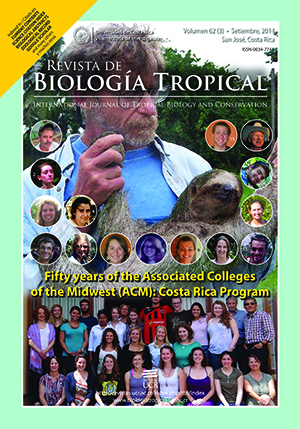Abstract
Winteraceae has long been considered a family with early diversification among angiosperms, with characters such as: flowers with many spirally arranged parts and apocarpic ovary formed by plicated carpels with sessile stigma. In Drimys, the presence or absence of conspicuous glands on the connective of the stamens have been used as a taxonomic character, and it is considered a synapomorphy for the clade including Drimys angustifolia, D. brasiliensis, D. granadensis and D. roraimensis (Northeastern clade); however, the anatomy of stamens and carpels has only been studied in detail for D. winteri (Southwestern clade). In this research, the presence and the structure of glands on the connective of stamens was studied in seven species of the genus from herbarium specimens, and a detailed study of the anatomy and development of stamens and carpels was carried out by scanning electron and optic microscopy in Drimys granadensis. We found similarities between D. granadensis and D. winteri for the following characters: Basic type anther wall formation, secretory tapetum that collapses at maturity, intermediate type microsporogenesis with formation of a transient cell plate in telophase I, ascidiated carpel due to the formation of an adaxial lip during development, stigma closed by interdigitation of epidermal cells. We also determined that the large glands on anther mature connective are originated by an overgrowth of subepidermal oil cells; this character is a Northeastern Drimys clade synapomorphy, while it was absent in both Drimys of Southwestern clade (which includes D. andina, D. confertifolia and D. winteri), and the rest of the Winteraceae. We are proposing the hypothesis that the highly variable enviromental conditions in the tropics where Drimys Northeastern clade is distributed, with a wide range of pollinators, would be associated with the emergence of glandular conspicuously stamens; while, as a prediction to be confirmed, temperated Southwestern clade species, without conspicuous glands, should have a smaller range of visitors and/or pollinators, or even be anemophilous species as Drimys confertifolia.Comments

This work is licensed under a Creative Commons Attribution 4.0 International License.
Copyright (c) 2014 Revista de Biología Tropical
Downloads
Download data is not yet available.






